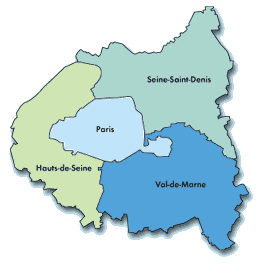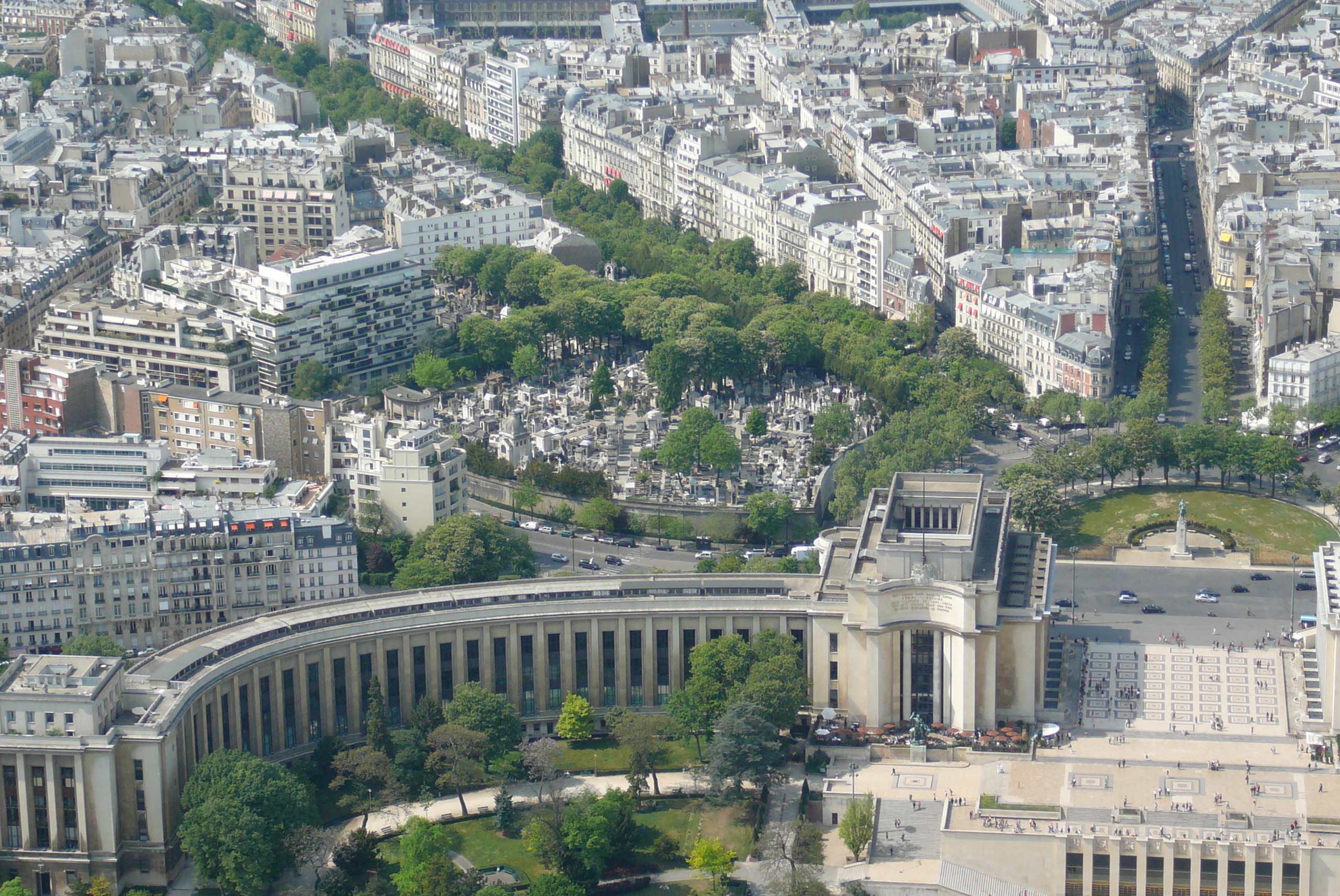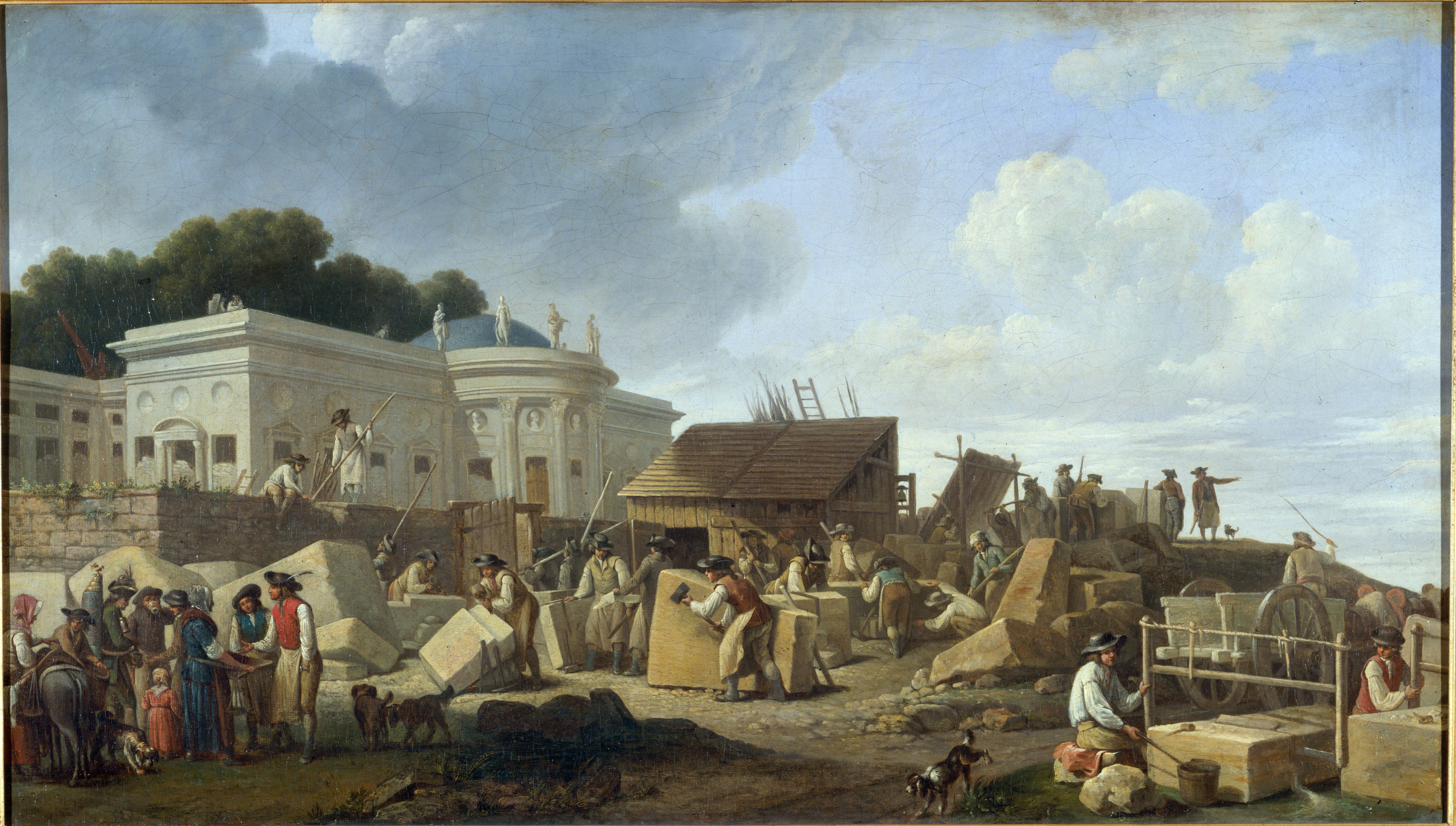|
Neuilly-sur-Seine
Neuilly-sur-Seine (; literally 'Neuilly on Seine'), also known simply as Neuilly, is a commune in the department of Hauts-de-Seine in France, just west of Paris. Immediately adjacent to the city, the area is composed of mostly select residential neighbourhoods, as well as many corporate headquarters and a handful of foreign embassies. It is the wealthiest and most expensive suburb of Paris. Together with the 16th and 7th arrondissement of Paris, the town of Neuilly-sur-Seine forms the most affluent and prestigious residential area in the whole of France. It has the 2nd highest average household income in France, at €112,504 per year (in 2020). History Originally Pont de Neuilly was a small hamlet under the jurisdiction of Villiers, a larger settlement mentioned in medieval sources as early as 832 and now absorbed by the commune of Levallois-Perret. It was not until 1222 that the little settlement of Neuilly, established on the banks of the Seine, was mentioned for the firs ... [...More Info...] [...Related Items...] OR: [Wikipedia] [Google] [Baidu] |
Levallois-Perret
Levallois-Perret () is a commune in the Hauts-de-Seine department and Île-de-France region of north-central France. It lies some from the centre of Paris in the north-western suburbs of the French capital. It is the most densely populated town in Europe and, together with neighbouring Neuilly-sur-Seine, one of the most expensive suburbs of Paris. Name The name Levallois-Perret comes from two housing developments, ''Champerret'' (started by landowner Jean-Jacques Perret in 1822) and ''Village Levallois'' (founded by developer Nicolas-Eugène Levallois in 1845), which resulted in the incorporation of the commune. History On the territory of what is now Levallois-Perret, before the French Revolution, stood the village of Villiers and the hamlet of Courcelles (or La Planchette). They now give their names to two Paris Métro stations. At the time of the creation of French communes during the French Revolution, they were part of the commune of Clichy, and the commune of Neuilly ... [...More Info...] [...Related Items...] OR: [Wikipedia] [Google] [Baidu] |
Jean-Christophe Fromantin
Jean-Christophe Fromantin, born August 30, 1962 in Nantes, is a French businessman and politician. He has been Mayor of Neuilly-sur-Seine since 2008. After launching the party Territoires en mouvement, he was elected deputy for the sixth district of Hauts-de-Seine in 2012. He did not seek re-election in 2017, preferring to keep his mandate as mayor. Elected to the Hauts-de-Seine departmental council in 2021, he became vice-president. Biography Studies and Family Jean-Christophe Fromantin studied at various schools in Saintes, Dunkerque and Strasbourg, where he obtained his baccalaureate in 1981. After a year of economics and another in a preparatory class, he entered ESLSCA in Paris and graduated in 1986. In 2015, he became a reserve officer (frigate captain) in the French Navy. Married he had four children. He lives in Neuilly-sur-Seine since 1985. Professional career path Between 1987 and 1988, he did his national service as a volunteer in Lisbon. On his re ... [...More Info...] [...Related Items...] OR: [Wikipedia] [Google] [Baidu] |
Hauts-de-Seine
Hauts-de-Seine (; ) is a département in the Île-de-France region, Northern France. It covers Paris's western inner suburbs. It is bordered by Paris, Seine-Saint-Denis and Val-de-Marne to the east, Val-d'Oise to the north, Yvelines to the west and Essonne to the south. With a population of 1,624,357 (as of 2019)Populations légales 2019: 92 Hauts-de-Seine INSEE and a total area of 176 square kilometres (68 square miles), it is the second most highly densely populated department of France after Paris. It is the [...More Info...] [...Related Items...] OR: [Wikipedia] [Google] [Baidu] |
Paris
Paris () is the Capital city, capital and List of communes in France with over 20,000 inhabitants, most populous city of France, with an estimated population of 2,165,423 residents in 2019 in an area of more than 105 km² (41 sq mi), making it the List of cities proper by population density, 30th most densely populated city in the world in 2020. Since the 17th century, Paris has been one of the world's major centres of finance, diplomacy, commerce, Fashion capital, fashion, gastronomy, and science. For its leading role in the arts and sciences, as well as its very early system of street lighting, in the 19th century it became known as "the City of Light". Like London, prior to the Second World War, it was also sometimes called Caput Mundi#Paris, the capital of the world. The City of Paris is the centre of the Île-de-France Regions of France, region, or Paris Region, with an estimated population of 12,262,544 in 2019, or about 19% of the population of France, making the ... [...More Info...] [...Related Items...] OR: [Wikipedia] [Google] [Baidu] |
Bois De Boulogne
The Bois de Boulogne (, "Boulogne woodland") is a large public park located along the western edge of the 16th arrondissement of Paris, near the suburb of Boulogne-Billancourt and Neuilly-sur-Seine. The land was ceded to the city of Paris by the Emperor Napoleon III to be turned into a public park in 1852. It is the second-largest park in Paris, slightly smaller than the Bois de Vincennes on the eastern side of the city. It covers an area of 845 hectares (2088 acres), which is about two and a half times the area of Central Park in New York, slightly larger than Phoenix Park in Dublin, and slightly smaller than Richmond Park in London. Within the boundaries of the Bois de Boulogne are an English landscape garden with several lakes and a cascade; two smaller botanical and landscape gardens, the Château de Bagatelle and the Pré-Catelan; a zoo and amusement park in the Jardin d'Acclimatation; GoodPlanet Foundation's Domaine de Longchamp dedicated to ecology and humanism, ... [...More Info...] [...Related Items...] OR: [Wikipedia] [Google] [Baidu] |
16th Arrondissement Of Paris
The 16th arrondissement of Paris (''XVIe arrondissement'') is one of the 20 arrondissements of the capital city of France. In spoken French, this arrondissement is referred to as ''seizième''. The arrondissement includes part of the Arc de Triomphe, and a concentration of museums between the and the , complemented in 2014 by the Fondation Louis Vuitton. With its ornate 19th-century buildings, large avenues, prestigious schools, museums, and various parks, the arrondissement has long been known as one of French high society's favourite places of residence (comparable to London's Kensington and Chelsea or Berlin's Charlottenburg) to such an extent that the phrase () has been associated with great wealth in French popular culture. Indeed, the 16th arrondissement of Paris is France's third richest district for average household income, following the 7th, and , both adjacent. The 16th arrondissement hosts several large sporting venues, including: the , which is the stadium ... [...More Info...] [...Related Items...] OR: [Wikipedia] [Google] [Baidu] |
Clichy, Hauts-de-Seine
Clichy ( , ; sometimes unofficially Clichy-la-Garenne ) is a commune in the northwestern suburbs of Paris, France. It is located on the Seine, from the centre of Paris. In 2017, it had a population of 61,070. Located in Clichy are the headquarters of the L'Oréal Group, the world's largest company in cosmetics and beauty, Bic, one of the biggest pen producers in the world, as well as Sony France, a large electronics and media company. Name The name Clichy was recorded for the first time in the 6th century as ''Clippiacum'', later corrupted into ''Clichiacum'', meaning "estate of Cleppius", a Gallo-Roman landowner. In the 13th century, the plain of Clichy was used as a ''garenne'' ("warren" in English), i.e. a hunting park and game preserve for the exclusive use of the king or a lord. Clichy became known as Clichy-la-Garenne ("Clichy the Warren" or preserve). Between 1793 and 1795, during the French Revolution, Clichy-la-Garenne was renamed ''Clichy-la-Patriote'' (meaning "C ... [...More Info...] [...Related Items...] OR: [Wikipedia] [Google] [Baidu] |
Grand Paris
The Métropole du Grand Paris (; "Metropolis of Greater Paris"),There is no official or widely-used English translation yet. also known as Grand Paris or Greater Paris, is a ''métropole'' covering the City of Paris and its nearest surrounding suburbs. The ''métropole'' came into existence on 1 January 2016; it comprises 131 communes, including Paris and all 123 communes in the surrounding inner-suburban departments of the ''Petite Couronne'' (Hauts-de-Seine, Seine-Saint-Denis and Val-de-Marne), plus seven communes in two of the outer-suburban departments, including the communes of Argenteuil in Val-d'Oise, Savigny-sur-Orge, Juvisy-sur-Orge, Viry-Châtillon and Paray-Vieille-Poste in Essonne, the last of which covers part of Orly Airport. Part of the ''métropole'' comprises the Seine department, which existed from 1929 to 1968. Grand Paris covers 814 square kilometers (314 square miles), about the size of Singapore, and has a population of over 7 million. The ''métropol ... [...More Info...] [...Related Items...] OR: [Wikipedia] [Google] [Baidu] |
XVIIe Arrondissement
The 17th arrondissement of Paris (''XVIIe arrondissement'') is one of the 20 arrondissements of the capital city of France. In spoken French, it is referred to as ''le dix-septième'' (; "the seventeenth"). The arrondissement, known as Batignolles-Monceau, is situated on the right bank of the River Seine. In 2019, it had a population of 166,543. It borders the inner suburbs of Neuilly-sur-Seine, Levallois-Perret and Clichy in Hauts-de-Seine to the northwest, as well as Saint-Ouen-sur-Seine in Seine-Saint-Denis to the northeast. Geography The land area of the 17th arrondissement is 5.669 km2 (2.189 sq. miles, or 1,401 acres). Situated on the right bank (Rive Droite) of the River Seine, it is divided into four administrative districts: Ternes and Monceau in the southwestern part, two upper-class districts which are more Haussmannian in style; in the middle of the arrondissement, the Batignolles district, an area mostly occupied by young families or couples, with a marked gen ... [...More Info...] [...Related Items...] OR: [Wikipedia] [Google] [Baidu] |
7th Arrondissement Of Paris
The 7th arrondissement of Paris (''VIIe arrondissement'') is one of the 20 arrondissements of the capital city of France. In spoken French, this arrondissement is referred to as ''le septième''. The arrondissement, called Palais-Bourbon in a reference to the seat of the National Assembly, includes some of the major and well-known tourist attractions of Paris, such as the Eiffel Tower, the Hôtel des Invalides (Napoleon's resting place), the Chapel of Our Lady of the Miraculous Medal, as well as a concentration of museums such as the Musée d'Orsay, Musée Rodin and the Musée du Quai Branly – Jacques Chirac. Situated on the Rive Gauche—the "Left" bank of the River Seine—this central arrondissement, which includes the historical aristocratic neighbourhood of Faubourg Saint-Germain, contains a number of French national institutions, among them the National Assembly and numerous government ministries. It is also home to many foreign diplomatic embassies, some of them oc ... [...More Info...] [...Related Items...] OR: [Wikipedia] [Google] [Baidu] |
Normandy
Normandy (; french: link=no, Normandie ; nrf, Normaundie, Nouormandie ; from Old French , plural of ''Normant'', originally from the word for "northman" in several Scandinavian languages) is a geographical and cultural region in Northwestern Europe, roughly coextensive with the historical Duchy of Normandy. Normandy comprises mainland Normandy (a part of France) and the Channel Islands (mostly the British Crown Dependencies). It covers . Its population is 3,499,280. The inhabitants of Normandy are known as Normans, and the region is the historic homeland of the Norman language. Large settlements include Rouen, Caen, Le Havre and Cherbourg. The cultural region of Normandy is roughly similar to the historical Duchy of Normandy, which includes small areas now part of the departments of Mayenne and Sarthe. The Channel Islands (French: ''Îles Anglo-Normandes'') are also historically part of Normandy; they cover and comprise two bailiwicks: Guernsey and Jersey, which a ... [...More Info...] [...Related Items...] OR: [Wikipedia] [Google] [Baidu] |
Old Norse
Old Norse, Old Nordic, or Old Scandinavian, is a stage of development of North Germanic dialects before their final divergence into separate Nordic languages. Old Norse was spoken by inhabitants of Scandinavia and their overseas settlements and chronologically coincides with the Viking Age, the Christianization of Scandinavia and the consolidation of Scandinavian kingdoms from about the 7th to the 15th centuries. The Proto-Norse language developed into Old Norse by the 8th century, and Old Norse began to develop into the modern North Germanic languages in the mid-to-late 14th century, ending the language phase known as Old Norse. These dates, however, are not absolute, since written Old Norse is found well into the 15th century. Old Norse was divided into three dialects: ''Old West Norse'' or ''Old West Nordic'' (often referred to as ''Old Norse''), ''Old East Norse'' or ''Old East Nordic'', and '' Old Gutnish''. Old West Norse and Old East Norse formed a dialect ... [...More Info...] [...Related Items...] OR: [Wikipedia] [Google] [Baidu] |







